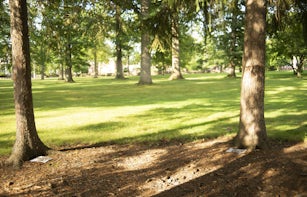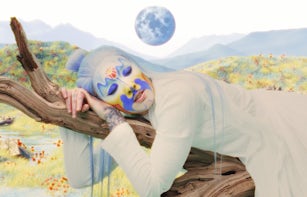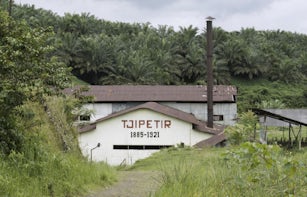In a compelling interview in 1975 with Avalanche magazine editor Willoughby Sharp, artist Darcy Lange expressed the need to transgress the conventional boundaries of the art world, asking: ‘Why should a videographer be confined to galleries and the art world?’ He defined his activity as ‘being something very close to social activism’, 01 reflected in a video practice that had begun to rely primarily on experiential and relational exchanges with his recorded subjects. 02 He saw video as a medium that could effect change within a broader cultural context – a tool to raise social and political consciousness, contributing to a counter-culture defined by left-wing political agendas.03
After living in London for nearly a decade, Lange made an extended visit to his homeland Aotearoa New Zealand (hereafter referred to as New Zealand) in 1977 where he immediately began the three-year-long Māori Land Project. 04 With this work he joined the efforts of fellow documentary film-makers to raise awareness and mobilise support for Māori over their land rights. The 1970s saw the rise of the Māori renaissance, a movement that sought self-determination, standing against colonialism and its enclosures of Māori land, and demanding reforms to land rights. It was fuelled by the formation of Māori activist groups and a string of land occupations and marches including the 1975 Land March to Parliament, Bastion Point (1977–78) and the annual protests started in 1971 by Ngā Tamatoa (Young Warriors) on Waitangi Day, commemorating the Treaty of Waitangi, signed in 1840 by representatives of the British Crown and Māori chiefs. The reforms led to the establishment of the Waitangi Tribunal in 1975, a permanent commission for land claims regarding legislation, policies, actions or omissions of the Crown that are alleged to breach the promises made by the Treaty of Waitangi.05
The political backdrop to the Māori protest movement was the emergence of the New Left in New Zealand that was influenced by the civil rights and international liberation movements, and growing Marxism and feminism. The so-called long 1970s (from the late 1960s to early 1980s) was a period characterised by mass dissent in New Zealand, with the demonstrations against the Vietnam War and sporting contacts with Apartheid South Africa, which, gaining mass support in the early 1970s, became the catalyst and lay the groundwork for other protest movements such as the ecology, anti-nuclear, feminist and Māori self-determination movements. 06 Many Pākehā (of European descent) shared Māori self-determination as an extension of their anti-capitalist and anti-colonialist positions, and indeed, as New Zealand historian Toby Boraman acknowledges, ‘support for Māori sovereignty became the default Pākehā leftist view by the early 1980s onwards’.07

The high visibility of a ‘radical urban Māori culture’ and its activism created ‘a paradigmatic shift in how the nation was conceived’. 08 The term tangata whenua (people of the land) became increasingly significant for the identity politics of the 1990s. It not only emphasised the interconnectedness of Māori to the land (whenua also means placenta), but to the increasing importance of indigeneity to Māori rights, the term became key so as to ‘nationalize indigenous political agency’. 09 This political climate was captured in documentaries made by Pākehā and Māori film-makers including Barry Barclay’s television series Tangata Whenua (1974), Leon Narbey and Geoff Steven’s Te Matakite o Aotearoa/The Māori Land March (1975), Chris Strewe’s Waitangi: Die Geschichte eines Vertrages und seiner Erben (The Story of A Treaty and Its Inheritors) (1977), and Merata Mita, Leon Narbey and Gerd Pohlmann’s Bastion Point Day 507 (1980).10
The Making of Māori Land Project
Lange’s Māori Land Project emerges within this political and cultural context. This complex and vast work documented two cases of land alienation: Takaparawha (at the time referred to as Bastion Point) in Auckland and the Ngātihine land block, near Kawakawa, Tai Tokerau, north of Auckland. 11 The former case concerned Māori land confiscated by the government in 1840 and turned into a military post in 1885, and later gifted to the city council, who in 1976 was planning to sell it for real-estate development. The occupation of Bastion Point led by Whātua-o-Ōrākei lasted over sixteen months, and became one of the most public cases of Māori political action (later the government returned the land to Ngāti Whātua, the local tribe, as part of the Treaty of Waitangi settlement process). 12 The Ngātihine case, on the other hand, involved a legal dispute to stop land from being leased by a forestry corporation, under the argument that Māori owners had left their land underdeveloped. 13
It is unclear what initially brought Lange to become engaged in this project, but he recalls meeting, through a friend who had worked on the film Te Matakite o Aotearoa, people who were involved in the Māori struggles. Lange established close relations with key Māori such as Joe Hawke, spokesperson for the Bastion Point occupation, Colin Clark of the Ōrākei Action Committee and most especially, with Ngāpuhi land rights activist and photographer John Miller, who introduced him to the Ngātihine case, travelled with him and even shot some of the material. 14 Over the course of three trips to New Zealand during 1977–78, Lange gathered interviews with important Māori activists, politicians and members of parliament that captured contrasting perspectives. In addition to Hawke, Clark and Miller, they included Taura Eruera, anthropologist and founder of Ngāti Tamatoa; Duncan MacIntyre, Minister of Māori Affairs of the National Party; Matiu Rata, former Minister of Māori Affairs of the Labour Party; Matiu Tarawa, land rights campaigner; Tim Horopapera, Tasman Mill site pulp and paper worker and unionist; and finally Virginia Shaw, a reporter with New Zealand’s TV One who brought some of these contacts with key politicians and media individuals. 15





